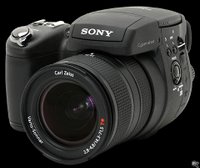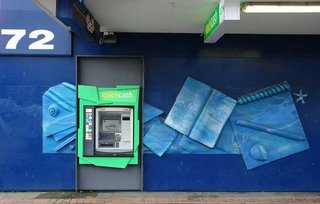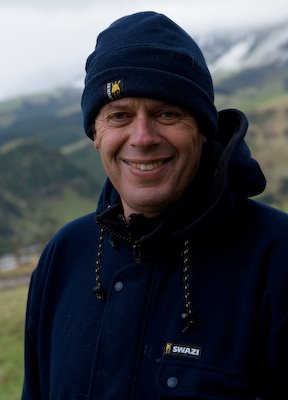DSLR-killer? The Sony DSC-R1
If,as I do, you like shooting life in the street, and you do it whenever you get the chance, then you will have probably have tried it with a digicam (one of those small point-and-shoot cameras). You will have hated the shutter lag on
 them, but appreciated the anonymity. The image quality may well have irritated you and the tonal range may well have annoyed you as well. The ability to make big prints as well. Bridge’s Law (2005) states that: the importance and final size of an image is inversely proportional to the size of the sensor available at the time of capture.
them, but appreciated the anonymity. The image quality may well have irritated you and the tonal range may well have annoyed you as well. The ability to make big prints as well. Bridge’s Law (2005) states that: the importance and final size of an image is inversely proportional to the size of the sensor available at the time of capture.If you are a film shooter, then the Leica M-series has to be the camera of choice. Made famous by Cartier-Bresson, it has a 70-something year heritage and a process of being continually refined to suit its purpose-shooting Life. But of course lots of us have forsaken the silver grain for the pixel, and what is there that fills that need? The Digilux 2? Small sensor-outrageous price. The Fuji 9500? Noisy sensor and prone to highlight
 clipping. The Olympus 7070? Perfect-if you can get one. Now discontinued. So what then? I love shooting the street. Significant amounts of my work involve Life and life on the street. But it needs to be up for portraits and landscapes. So I wrote a wish list for the perfect street/documentary camera:
clipping. The Olympus 7070? Perfect-if you can get one. Now discontinued. So what then? I love shooting the street. Significant amounts of my work involve Life and life on the street. But it needs to be up for portraits and landscapes. So I wrote a wish list for the perfect street/documentary camera: - Sensor able to compete with my DSLR; capable of exhibition-quality enlargement to 12X18”.Maybe even bigger. That means a minimum of 8Mp.
- Zoom lens from around 28 to 135. You can shoot 90% of your work on that.
- Fast shutter response. Close to that of a DSLR needed.
- A normal card format so I don’t have to get yet another multi-card reader. Compact Flash would be best, since my work cameras run this.
- Superb lens. It’s the lens that determines the final image and imparts itsd own character to the final image. F2.8 would be primo.
- Excellent colour straight out of the sensor.
- Great dynamic range.
- A live histogram, so I can make exposure adjustments as I work. DSLR’s don’t have what is one of the serious digital photographer’s most useful tools. Happy snappers do.
- Intuitive controls and ergonomics.
Over the last 2-3 years I have tried a lot of cameras. Some were dogs. Terrible ergonomics, sod-all film speed range, shutters that went off ages after you made the decision. Others were nice to use, until you made the print. Then the noise and abrupt tonal transitions became apparent. Oh well, it had to get better one day…And it has.
Enter the Sony DSC-R1 DSLR. For the last month or so I have had the use of Sony’s latest-generation digicam. Let me tell you a bit about it. No, this isn’t going to be one of those exhaustive part-by-part descriptions. Phil Askey at DPReview has done that. You can read it here. These are my comments as a photographer.. I want to use it, not kiss it goodnight and, since I am a bloke, preferably without having to read the manual. But it does have some cool things I need to tell you about. In no particular order:
- A Carl Zeiss 24-120 2.8-4 T*(35mm equivalent) lens. Thoughts: minimal barrel distortion, very little CA. Stunning. The zoom ring is manual and it has fly-by-wire manual focusing. This makes its use quite intuitive.
- A 10.3MP CMOS APS-C sensor, the same size as a 20D/350D/D-70S. Because the sensor is bigger, it produces less noise than the smaller PSD (push-here-du**y) cameras. You can really see it when you have made a 13 x 19” print. There is a tiny bit of noise in the shadows, but nothing that can’t be smoothed out with NeatImage or Noise Ninja.
- Ability to shoot RAW. You do get a jpeg with it (whether you want it or not), so unless you really want the jpeg, I suggest you wind it right down to save space on the card.

- A live histogram that can be adjusted manually via the control wheel on the back using a system similar to that on my 1Ds Mk II. Very intuitive. After 30 minutes or so, it felt as if I had been using it for months.
- Very little shutter lag, especially when you set the camera on Monitor function
- Dual card slots. Memory stick and CompactFlash. No new card formats.
- A top-mounted LCD screen. Some reviewers have commented that it doesn’t work, that it’s clunky. Curiously enough few of them post images that are real-world. Bowls of flowers in the studio or a house in the distance aren’t real-world to me.
- An EVF, i.e. TV-screen viewfinder. It takes a little getting used to, but it’s really accurate and there is very little delay. Unlike some of the others, there is a degree of realism to the image.
- An intuitive autofocus mode. Set it and forget it.
- Superb colour. Primaries are strong, pastels and neutrals suitably understated.
- You can turn the shutter sound off. They have no idea when you press the shutter. Lovely!
- The Sony Infolithium battery. It really keeps you informed of how much power you have left.
I took it out for a series of test drives to my favourite shooing patch at New Brighton in Christchurch, New Zealand. There was a bit of a market on, so I moved around shooting, then took the images home, downloaded them into Photoshop CS2 and evaluated the experience.
The camera is quite intuitive. It took very little time to get used to it. The Live histogram really works and is quite accurate. The camera feels comfortable and the controls fall naturally to hand, The lens is a killer. I compared it with images from my Canon 1D MK II using a 24-70 2.8L lens and I am damned if I can spot the difference. The Canon images may be a little more noise-free and smoother, but the differences are marginal. The prints have a wonderful colour and are as sharp as they need be. I need to mention that I lower in-camera sharpening and then bring it back in CS2).
Yes, there some irritations: the buffer is too small, and it takes a long
 time to write subsequent images especially if you are shooting in RAW; RAW files take up 20Mb each ( more than the 16MP 1Ds MK II), so plenty of storage is in order; low-light focusing requires a bit of anticipation. And high ISO images are really noisy. These are small things however.
time to write subsequent images especially if you are shooting in RAW; RAW files take up 20Mb each ( more than the 16MP 1Ds MK II), so plenty of storage is in order; low-light focusing requires a bit of anticipation. And high ISO images are really noisy. These are small things however. The bottom line: this is a stunning camera suitable for just about anything. It more than compares to the 20D and its ilk, It doesn't need extra lenses, regular cleaning of the sensor or a huge camera bag. At around $NZ1500 it is indirect competition with the 350D/5D/D70S. In my opinion it more than matches them for ease of use and image quality.
Would I work up a book or an exhibition on it? You betcha.


2 Comments:
I must say I really enjoyed this piece.
Having a really good camera is very essential in the world of digital photography, thank you for this information.
I will look this camera up and probably "add" it to my wish list.
nice review on the R1. I have had a hand on play with this camera! ergonomics are nice, the big top display is very high res which is nice, but as others have said, will take getting used to being an on top viewfinder. I am not a fan of EVFs ever since I upgraded to a DSLR. I personally found the focus a bit sloe compared to DSLR counterparts. Things I would like changed for the next generation, a real optical viewfinder, better buffering for RAW as u said in your review, and faster focus engine like USM or silent wave.
Maz of chch
Post a Comment
<< Home